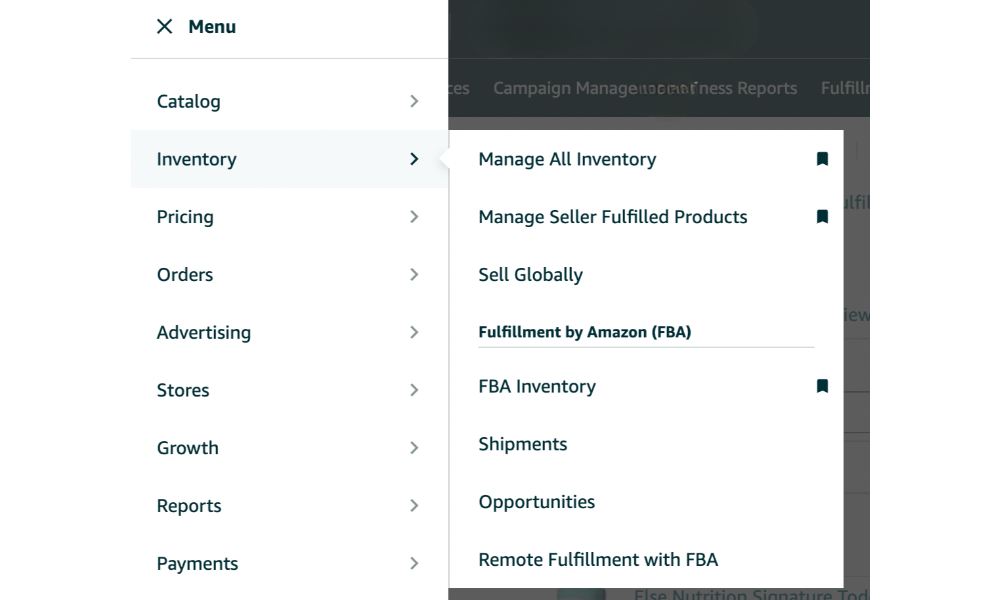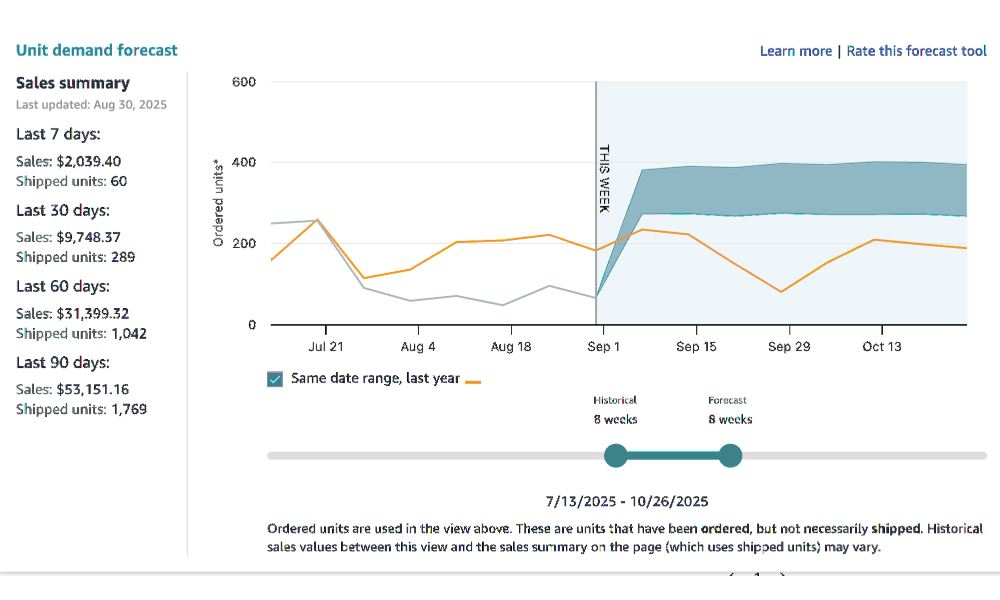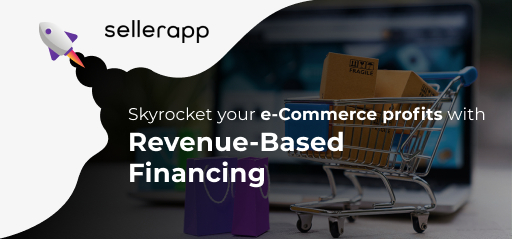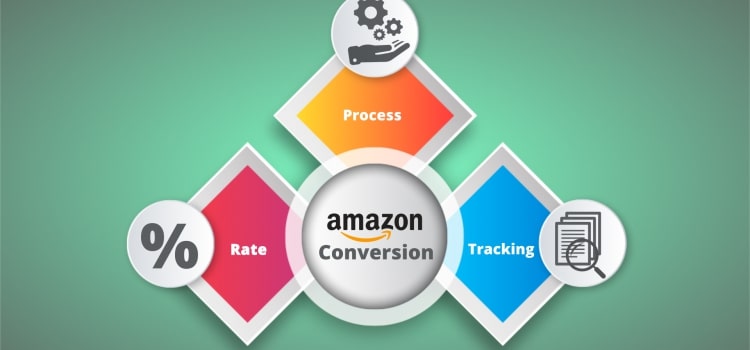Amazon Demand Forecasting: How It Works, Who Gets Access, and How to Maximize It

Amazon Demand Forecasting isn’t just another Amazon Seller Central feature; it’s one of the most powerful ways sellers can predict customer demand and prepare their inventory ahead of time.
By analyzing seasonality, pricing, promotions, and shopping behavior, Amazon’s demand forecasting tool projects future sales (up to 40 weeks out) to help you stock smartly, avoid overages, and protect your bottom line.
But as every seller knows, the tool has its limits (which we’ll discuss later).
Understanding how it works, who gets access, and how to maximize its value can make the difference between staying in stock when demand surges or losing sales to competitors completely.
Here, we’ll share the best use cases of the Amazon Demand Forecasting tool, assess its eligibility criteria, highlight its limitations, and share workarounds for the best results.
What is Amazon Demand Forecasting?
Amazon Demand Forecasting anticipates customer demand (for up to 40 weeks though the accuracy depends heavily on the product type, historical sales data, and seasonality) so sellers can send the right amount of inventory to Amazon at the right time.
For every product, Amazon creates a unique demand estimate using a probabilistic model designed just for that item.
It’s purely data-based, considering the seasonality, past performance, shopper behavior, pricing, promotions, and market shifts, aimed at making smarter inventory moves. As we know, planning is essential to keep your shelves stocked to grab on to every possible sales potential (without understocking) and yet not deal with added charges for overstocking your inventory.
In addition, another side of demand forecasting is that it protects you from Amazon’s excess inventory fees, ensuring you’re always ready to meet demand the moment it spikes.
It’s important not to confuse Amazon Demand Forecasting (the Seller Central feature for inventory planning) with Amazon Forecast, a fully managed AWS service for advanced time series forecasting.
Amazon’s demand forecasting primarily relies on historical sales data, including units sold over time, sales velocity trends, seasonal spikes, and returns or refunds, to understand past performance. It also considers inventory and fulfillment metrics such as current stock levels in FBA warehouses, inbound shipments, replenishment lead times, and warehouse distribution locations.
Customer behavior signals play a role too, including page views, add-to-cart rates, conversion rates, Amazon search ranking, and wishlist additions. Competitive and market factors are incorporated, such as pricing of similar products, competitor promotions, new product launches, and competitor stockouts.
Advertising and external traffic data, like sponsored ad impressions, clicks, CTR, external referral traffic, and promotions such as Lightning Deals or coupons, are also used. Together, these data points allow Amazon to generate predictive demand insights, optimize restock recommendations, and anticipate potential stockouts.
Who Gets Access to Amazon Demand Forecasting Tools?
Amazon doesn’t open its demand forecasting tools to every product out of the gate. Eligibility comes down to one thing, do you have enough sales history and velocity for Amazon to trust the data?
And we can’t proceed without mentioning that you absolutely need access to brand analytics to find this feature on your inventory dashboard.
Once you’re a Brand Registered seller, you have 90 days of sales history and the required velocity, this feature will be enabled within your Amazon Seller Central UI.
When you go to FBA inventory, and you tap ‘Details’ under Inventory overview, you get a forecast of any asked timeframe.



But the scenario may differ across types of sellers.
If you’ve been selling a product for a while, this feature is active for you to use. Amazon uses your historical sales data to project future demand, and the more consistent your history, the sharper those projections become. You’ll see tools like the Inventory Dashboard, Restock Inventory tool, and the Unit Demand Forecast tool light up with insights.
But here’s the catch, not every SKU will qualify for the feature. Even if you have been a seasoned seller, in case a certain product from your catalog is experiencing limited sales or is unpredictable, the Amazon Demand Forecast tool may not be working for you at all. In other words, steady sales lead the system to give you more useful predictions.
Imagine one of your SKUs moves 300 units a month, about 10 units a day on average. At the start of the month, you’re holding 350 units in Amazon’s fulfillment centers. That gives you roughly 35 days of cover (350 ÷ 10).
Now, you launch a promotion. Suddenly, your daily sales pace jumps to 12–13 units a day. At that new velocity, your inventory isn’t enough for 35 days anymore, as it drops closer to 27–28 days of estimated days for the product to go out of stock.
Here’s where Amazon’s forecasting tool comes in handy. It notices the rise in demand, recalculates your coverage, and flags the shortfall. You’ll see a restock recommendation notification in your dashboard.
For newcomers, the journey looks different from that of an existing seller. You won’t see demand forecasts because Amazon has no data to build its predictions on. Instead, you can lean on competitor research and third-party tools to set initial inventory targets.
Once you’ve sold consistently for about 90 days, Amazon can start surfacing forecasts if your product has enough velocity to matter in the model. Amazon requires a certain level of sales history and account maturity before enabling demand forecasting.
Sellers Without Active Inventory in FBA
Demand forecasting is closely tied to FBA inventory data. If you don’t have products fulfilled by Amazon, you may not see this feature at all.
Why? If your products are merchant-fulfilled (FBM) or not actively in FBA, Amazon doesn’t have consistent, real-time updates on your inventory movement, without which, the forecasting tool cannot generate accurate predictions. So the feature is simply unavailable for them.
Sellers in Restricted Categories or Regions
Some categories or countries may not yet be eligible for the forecasting tool. Amazon often limits advanced forecasting features based on regional availability and category restrictions.
Sellers in Restricted Categories or Regions.
For instance, regions such as Africa and certain parts of Central and South America may have controlled or no access to advanced forecasting tools.
How to Use Amazon’s Demand Forecast Tool to Reap the Most Benefit
These are some of the best benefits of using Amazon’s Demand Forecast Tool.
1. Ad Spend Allocation Based on Predicted Demand
The Amazon Demand Forecasting tool doesn’t limit itself to predicting the total units you might sell in a given duration. That foresight is essential when trying to monitor when demand is about to spike and your inventory status for the next 6-8 weeks.
An ad manager would use that data to ramp up ads so you’re always visible to customers who are searching for your products.
In this case, you’re proactive advertising, i.e, capturing market share whenever the demand starts peaking. As a standard practice, sellers or ad managers need to allocate more budget to campaigns for high-demand SKUs while lowering the bids for low-demand ones SKUs.
Example: The Amazon Demand Forecasting tool within the inventory dashboard (of Seller Central) shows that the demand for ~6mm yoga mats will double in 6 weeks. So, to make use of the spike in demand, you double down on the Sponsored Products and Sponsored Brands campaigns now, so by the time demand peaks, your campaigns are already optimized and get the most visibility.
2. Avoid Overspending During Low-Demand Periods
Every click isn’t meant for conversion. Running aggressive ads during a low-demand phase burns through the budget as it brings significant sales. Relying on the forecast tells you when to pull back so you can reallocate your ad budget better and smarter.
By shifting your resources to evergreen SKUs, you protect ACoS and ROAS by avoiding wasted spend.
Here, you can use SellerApp’s rule-based automation for bidding to hold back from bidding higher when demand softens.
Example: Your Amazon Demand Forecasting tool shows the dip in demand for swimsuits after summer. So, instead of keeping daily budgets flat, you reduce spend and redirect most of your budget into evergreen SKUs like gymwear. This protects ACoS and keeps your ad dollars productive.
3. Launch Timing & Seasonal Campaign Planning
Perfecting your timing for running ads is winning half the game in ecommerce. Forecasts often account for seasonality (holidays, Prime Day spikes, Q4 rush). The Amazon Demand Forecasting tool bakes in seasonality, so you can sync launches and campaigns with demand fluctuation. So, no need to guess the market readiness. Your ads can go live just before demand spikes, positioning your product ahead of competitors.
According to our experts, you can start running ads 2–3 weeks before peak demand so your products are at the top of the minds of the customers.
Example: Say the Amazon demand forecast predicts a Q4 surge for your home décor SKUs. You, without waiting for Black Friday traffic, launched Sponsored Display and video campaigns two weeks prior. This is also essential to make sure Amazon’s algorithm has enough data to favor your ads at the correct moment.
4. Inventory + Ads Synergy
Running ads when you’re out of stock has more negative effects than just drained ad spends. Whenever a customer clicks on an available product, it translates to wasted ad spend, while also creating a negative experience for customers. Some of them may leave negative feedback or turn to competitors due to this.
On the backend, constant stockouts affect your Amazon Account Health, lowering your Inventory Performance Index (IPI) and risking Buy Box eligibility. Worst of all, sales velocity collapses during a stockout, causing your organic rank to decline. This means even when you restock, you’ll pay more in ads just to regain the initial visibility.
In short, ads without inventory is detrimental to overall business potential. Amazon demand forecast lets you understand the inventory capacity so you never oversell. It also means it’s a good time to hold back on running ads to prevent orders beyond what you are capable of fulfilling.
For PPC ad managers, it is an indication to reallocate spending to well-stocked products.
Example: Demand forecast shows your kitchen knives will spike in the holidays, but inventory is tight. Instead of blasting ads, you reduce spend, hold your organic rank steady, and focus ad dollars on products with healthier stock levels.
5. Forecast-Driven Keyword Strategy
Demand shifts translate to a shift in search behavior. Amazon Demand Forecasting tool shows you which SKUs are about to face a higher sales velocity. And whenever interest rises, search behavior shifts first.
By anticipating this trend from the forecast, you can expand your keyword coverage ahead of time. The precise strategy would be adding seasonal, long-tail, and competitor-focused terms into your PPC campaigns. This way, when the predicted spike happens in actuality, your ads are already optimized to capture the exact terms customers are typing in search.
Example: Forecast shows camping tents trending in spring. You expand keyword targeting to include “family tents,” “outdoor tents,” and ASIN-target your competitors. By the time shoppers search, your ads are already everywhere they look.
6. Optimizing Placement Multipliers
Top-of-search is where any seller would like to see their products at, but it’s also where the bids are fiercest.
Forecast data helps you justify when it’s worth paying more for prime real estate. Instead of blindly overspending on top-of-search bids throughout the time, use demand forecasts to identify when customer interest in your product is about to surge.
If the forecast shows a spike in sales for your SKU during the coming weeks, that’s an indicator to increase your top-of-search multipliers and secure prime visibility.
Example: Forecast signals strong demand for wireless earbuds in November. You increase top-of-search multipliers by 40%. When shoppers search, your earbuds dominate the first row, winning clicks that competitors are still hesitating to pay for.
7. Dynamic Pricing Strategy
Ads drive traffic, but pricing decides the sale and profit incurred. Amazon demand forecast helps you modulate price strategy according to traffic waves.
Example: if the Amazon forecasting demand predicts a surge for your electric kettle, you can raise the price by $2, while also boosting ad bids. Customers buy anyway because of seasonality, and you capture both volume and higher profit margins.
8. Cross-Promotion & Upsell Campaigns
A surge in traffic to a single product creates spillover visibility that you can strategically use to boost related items in your catalog. This is where cross-promotion and upselling come in.
By running Sponsored Brand campaigns or creating product bundles, you position complementary products alongside the trending SKU, turning a single-purchase intent into a multi-item basket.
Example: Forecast shows spike in reusable water bottles. You create Sponsored Brand campaigns, bundling bottles with sleeves and cleaning kits. Shoppers who come for the bottle leave with a $40 cart instead of a $15 one.
9. Cash Flow & Ad Budget Forecasting
Scaling ads without budget planning can feel like flooring the gas pedal with half a tank of fuel. Forecasting lets you prepare for timely PPC spends so that it works in tandem with sales expectations.
Example: Amazon Brand Forecasting tool says weighted blankets will triple in demand by winter. So, instead of scrambling for budget in December, you allocate an extra $10K in ad spend as autumn arrives, ensuring campaigns don’t hit budget caps in peak season.
10. Geography-Based Demand Shifts
Not all demand is uniform country-wide. Forecast can reveal specific regional surges, allowing you to focus ad dollars where they’ll bring returns.
Example: The Amazon Brand Forecasting tool shows winter boots peaking in northern states. So, you plan Sponsored Display ads targeting shoppers in cold-weather zip codes, avoiding wasted impressions in warmer regions where demand is not relevant at that particular point in time.
11. Testing & Experimentation Windows
Here’s where the Amazon Brand Forecasting tool becomes thought-provoking. Low-demand periods aren’t useless. They’re the perfect time to experiment, as with forecasts in hand, you know when it’s safe to experiment without risking velocity.
Example: Say Brand tailored forecast shows a sales dip for garden tools in the fall. You can make use of this window to A/B test new ad creatives and A+ content, etc., so that by spring, when demand spikes, your listing is ready to bring some organic traffic..
12. Long-Term Brand Positioning
Through Amazon Brand Forecasting tool you can keep accumulating data that compounds year over year. With each cycle, you start seeing patterns. That’s what strengthens a brand, making it pivot to strategic planning.
Example: Two years of forecasts show consistent Q2 demand spikes for outdoor furniture. Instead of chasing seasonal sales, you position your brand with recurring Sponsored Brands campaigns every spring, making your brand synonymous with summer living.
Limitations of Amazon Demand Forecasting
Even when used perfectly, the Amazon Demand Forecasting tool has its boundaries. Here’s what sellers need to keep in mind:
1. Category Bias
Forecast accuracy is strongest in mature, steady-selling categories like electronics or home essentials. But if you’re selling in trend-driven marketplaces, the forecasts might not be completely reliable.
That’s because there isn’t enough reliable historical data to work from. Amazon will only avail data insights if it has substantial information, but a sudden seasonal spike might not be captured if it’s a new seller with insufficient year-round data.
2. Lack of Granularity or information
For large catalogs, you’ll often need SKU-level precision. Amazon’s forecasts tend to stay limited for certain ASINS, while the rest may show no option for data granularity or forecast.. For example, you might see rising demand for “6mm thick yoga mats” but no clear data on variations like size and color.
3. Reactive, Not Always Predictive
The tool leans heavily on past sales trends, which is fine for steady performers, but for new launches or products that go viral, it lags behind reality. Imagine launching a new kitchen gadget that goes viral on TikTok.
By the time Amazon’s forecast recognizes the demand surge, you could already be dealing with stockouts or missed ad opportunities.
4. Limited Customization
Every seller’s supply chain and business model is unique. Amazon demand forecasting doesn’t account for supplier lead times, MOQs, or custom pricing strategies or anything regarding that.
If your supplier requires a 90-day lead time but Amazon is only looking 60 days ahead, you’ll be stuck filling in the gaps yourself.
5. Time Cap
Amazon’s tool is designed for short- to mid-term horizons, which is usually a few weeks to a few months. That works for quick-turnover products, but for brands with long production cycles (like apparel sellers sourcing overseas), the window isn’t long enough.
What you really need are forecasts that stretch 6–12 months out to make confident manufacturing and shipping decisions.
6. Eligibility & Minimum Historical Data (the most important one)
Amazon only generates forecasts for SKUs that meet its internal eligibility criteria. You need sufficient historical sales for an SKU to be eligible for Amazon brand forecast updates. In practice, that means if an SKU doesn’t have a steady sales history, commonly around ~90 days of data or a minimum velocity, the forecasting feature won’t be available for that SKU at all.
That’s huge for new launches, low-volume variations, and one-off seasonal items. No history means no forecast. So many sellers may find an SKU suddenly ineligible despite having some sales.
Amazon Demand Forecast Has Its Limits But APIs Change the Game
Amazon Demand Forecasting is helpful, but let’s be real: it’s not the whole picture. That leaves sellers guessing when it comes to multi-channel data, long-term planning, or SKU-level clarity for new products, especially when historical data is limited.
This is where a Sales API like
SellerApp comes in as the missing puzzle piece. By pulling together sales, keyword, competitor, and customer data in one place, APIs give you the clarity Amazon’s default tools simply can’t, which can be a great workaround for sellers.
This is because Amazon considers a closed-loop, short-horizon, sales-history-driven forecasting, which is developed to keep your FBA inventory balanced. Whereas, SellerApp API with an open, multi-source, explainable forecasting engine is designed to give sellers clarity, flexibility, and control over demand forecasts.
Features of SellerApp’s Seller API
Here’s your reason to choose a robust API solution such as SellerApp’s.
Cross-Channel Insights
SellerApp’s Amazon Seller APIs ingests Amazon platform signals so you spot trends early, even before they fully surface on Amazon.
Say if “desk organizers” spike on Google Trends, you’ll see the demand signal before your competitors which will help you become visible to the new customers start looking up for it on Amazon.
Granular SKU-Level Forecasting
Unlike Amazon, which struggles with new products, SellerApp API builds demand models using category trends, competitor pricing, and keyword search trends. Even if you lack data initially, it uses competitor data from category leaders to let you use it for decision making. Something Amazon won’t offer you.
So, even with zero sales history, the API estimates demand based on what’s working in your category.
Real-Time Data Refresh
While Amazon updates forecasts periodically, which means it is not updated in real time. SellerApp API pushes near real-time sales and keyword signals, helping you react instantly to shifts. So, if a competitor runs out of stock, the API shows you can raise bids and grab the market share they lost.
Cross-Border Consolidation
Amazon keeps markets separate (U.S., U.K., DE), but SellerApp API aggregates them for a global demand view. This is especially useful for enterprise sellers. if you want to gauge how “eco-friendly water bottles” are trending in the U.S. vs. U.K. and allocate inventory intelligently, SellerApp API makes it possible.
Integration Into Your Systems
SellerApp’s Ecommerce Data API allows you to seamlessly feed critical Amazon and ecommerce data into your custom dashboards or internal systems, eliminating the need for manual exports.
No manual exports needed if you’d like to integrate bulk data sets. Most importantly, you can create your custom dashboard and use it however you like for maximum convenience.
So, we can say that when the demand surged, the brand was stocked, visible, and financially prepared, while competitors scrambled with stockouts and missed sales.
Unlike Amazon’s built-in forecasting, which only signals how many units to replenish, SellerApp’s API connects that forecast directly to keywords, ads, and more, turning raw data into a coordinated growth strategy.
Final thoughts
Amazon Demand Forecasting gives sellers an important advantage: clarity on when to restock and how much to ship. But it’s still just one piece of the puzzle, limited by history, category, and Amazon’s own rules.
To stay truly ahead, sellers need forecasting that goes beyond inventory updates, connecting directly with ads, keywords, and even demand shifts. That’s where SellerApp’s API changes the game. By turning raw forecasts into coordinated system you’re no longer just reacting to demand, you’re planning growth.
Read More:
Amazon Product Research: Methods to Discover Winning Products
Amazon Pricing Strategy to Maximize Sales and Ensure Steady Profitability
Top 15 Ecommerce Marketing Tools You Should Use to Optimize Your Business Strategies
15 Essential Amazon Analytics Tools for Business Growth










